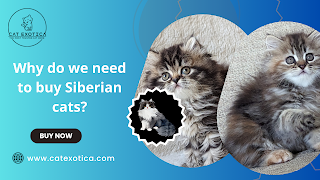What is the Difference Between Persian Cats and Other Breeds?
Introduction:
Cats come in many breeds, each with unique features, personalities, and care requirements. One of the most famous and loved breeds is the Persian cat. Persian cats are different from other breeds in many ways, such as appearance, temperament, grooming needs, and health concerns. In this article, we will explore the key differences between Persian cats and other breeds to help you understand what makes them special.
1. Appearance
One of the most noticeable differences between Persian cats and other breeds is their appearance. Persian cats have a long, thick coat that gives them a luxurious look. Their fur is soft and requires regular grooming. They have a flat face, round head, large eyes, and a short nose, which gives them a unique look. Other breeds, such as Siamese or Maine Coon, have different facial structures, body shapes, and fur lengths. Siamese cats have a sleek, short coat and a slim, muscular body, while Maine Coons have a large, sturdy body with a long, bushy tail.
2. Temperament and Personality
Persian Cats love to relax, nap, and enjoy a quiet environment. They are affectionate but not overly demanding. Persian cats enjoy lap time and cuddles, making them great companions for people who prefer a peaceful pet. Other breeds, like Bengal or Siamese cats, tend to be more active and playful. Bengals are high-energy cats that love to climb and explore, while Siamese cats are known for being talkative and social. If you prefer a quiet and relaxed cat, the Persian is a great choice.
3. Grooming and Maintenance
Persian cats require a lot of grooming because of their long, thick fur. Their coat needs to be brushed daily to prevent tangles and mats. They also need regular baths and eye cleaning because they have teary eyes due to their flat face. Other breeds, like the British Shorthair or Siamese, have short fur that requires minimal grooming. If you are looking for a low-maintenance cat, a short-haired breed might be a better choice.
4. Health Issues
Persian cats are prone to certain health problems due to their flat-faced (brachycephalic) structure. They can have breathing difficulties, eye infections, and dental problems. Other breeds may have different health concerns. For example, Maine Coons are prone to heart disease, and Siamese cats may have kidney issues. Before choosing a breed, it is important to understand their health risks and how to care for them properly.
5. Activity Level
Persian cats are less active compared to many other breeds. They enjoy resting, lounging, and being pampered. Some other breeds, like Bengals, Abyssinians, and Siamese, are very active and need a lot of playtime and exercise. If you want a playful cat, an energetic breed might be a better choice. If you prefer a cat that enjoys sitting beside you, a Persian cat is ideal.
6. Intelligence and Trainability
Persian cats are intelligent but not as curious or trainable as some other breeds. They can learn simple commands and routines, but they are not as interested in tricks or games as breeds like the Siamese or Bengal. Siamese cats, for example, are highly intelligent and enjoy puzzle toys and interactive games. If you want a cat that responds well to training, a different breed may be more suitable.
7. Social Behavior
Persian cats are affectionate but can be a little reserved. They usually bond closely with their owners but may take time to warm up to strangers. Some other breeds, like Ragdolls, are known for being extremely friendly and sociable. Ragdolls love to be held and follow their owners everywhere. Siamese cats also love attention and often demand it by meowing loudly. If you want a very social cat, a Persian cat may not be the best choice.
8. Lifespan
Persian cats have an average lifespan of 12–15 years, but with proper care, they can live longer. Other breeds have different lifespans. For example, Siamese and Maine Coon cats can live up to 15–20 years. Lifespan depends on genetics, diet, and overall health care.
9. Adaptability
Persian cats adapt well to indoor living and prefer a calm, quiet home. Some other breeds, like the Maine Coon or Bengal, are more adaptable and can thrive in various environments, including homes with children and other pets. If you have a busy household, a Persian cat may not be the best fit.
10. Cost and Availability
Persian cats are one of the more expensive breeds due to their unique appearance and high-maintenance grooming needs. Their price can vary depending on their lineage, coat color, and breeder reputation. Other breeds, like domestic shorthairs, are more affordable and easier to find. If budget is a concern, it is important to consider the cost of grooming, healthcare, and maintenance before choosing a Persian cat.
Conclusion
Persian cats are unique and beautiful, but they require special care. Their long fur, flat face, and gentle nature make them stand out from other breeds. However, they need regular grooming, a calm environment, and attention to their health. Other breeds, like the playful Siamese, energetic Bengal, or friendly Ragdoll, offer different qualities. The best cat for you depends on your lifestyle, personality, and how much time you can dedicate to their care. Whether you choose a Persian cat or another breed, every cat is special in its own way and will bring joy and companionship to your life.
Feel free to contact us
Call: 6363157838
Mail: catexotica.enquiry@gmail.com
Website: https://www.catexotica.com/
Map Link :https://maps.app.goo.gl/BtKgssmg8Z2B53DJ6




Comments
Post a Comment